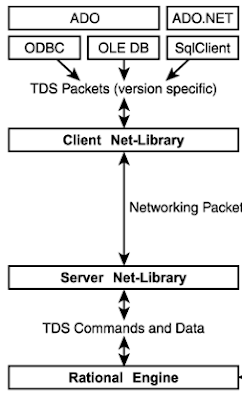SQL Server 2022: Accelerated Database Recovery enhancements from SQL 2019 to SQL 2022
Hi Guys,
Welcome back! You Start to be really many to read this blog! Just two words: thank you very much!
Today we will talk again about the Accelerated Database Recovery (ADR) feature, we talked about the same topic already 4 years ago here SQL Server 2019 and the Accelerated Database Recovery.
I want to remind you that SQL 2022 is the latest version of the famous RDBMS produced by Microsoft.
Accelerated Data Recovery: a short summary!
As we have seen some time ago, the ADR has been introduced in SQL 2019 (15.x) with the obective of improving the database availability, especially in the presence of long running transactions.
To achieve this, the database engine recovery process has been redesigned.
We do not have to scan the transaction log from and to the beginning of the oldest active transaction instead our log is read only from the last checkpoint and for this reason the recovery time is not influenced by long-running transaction.
Yes this is a very cool feature introduced by the 2019 release of the SQL Server!
In addition, the fact that it is no longer necessary to process the log for the entire transaction, makes the required space in the log considerably reduced.
Without going down in major details (for now) we get this behavior by versioning all physical database modifications and only undoing logical operations, which are limited and can be undone almost instant. All transactions that were active at the time of a crash are marked as broken, and therefore any version generated by these transactions can be ignored by simultaneous user queries.
SQL 2022 and ADR improvements
Speaking of ADR the new SQL Server 2022 bring us many improvements.
While in SQL Server 2019 (15.x) the ADR cleanup process is single threaded within a SQL Server instance with the new SQL Server 2022 (16.x) this process uses became multi-threaded and now it is called multi-threaded version cleanup (MTVC).
Now multiple databases in the same SQL Server instance are cleaned in parallel.
Even if MTVC is enabled by default it uses one thread per SQL instance. In order to use more thread you need to set the ADR Cleaner Thread Count value with sp_configure.
However, even if you configure the ADR Cleaner Count to a higher value in a sql instance, the ADR cleaner will only assign one thread per database, the remaining threads remain inactive.
If the Multi-threaded version cleanup is the first improvement, the second is called User transaction cleanup.
User transaction cleanup allows user transactions to perform page cleaning that cannot be addressed by the regular cleaning process due to lock conficts, in this way the ADR cleanup process is more efficient.
But the news didn’t end here.
Persisted version store (PVS) pages are tracked at the extent level to reduce the memory needed to manage versioneg pages.
Then, we have improvement on the Accelerated Data Recovery cleaner.
Accelerated Data Recovery cleaner has been improved. Some improvements have been implemented in the way SQL Server tracks and records aoorted versions of a page. This has lead to an optimized memory usage.
Finally, we have also a changes in the persisted version store. We can say that now clean up happens at transaction-level. Now infact ADR can clean up versions belonging to committed transactions independent of whether there are aborted transactions in the system.
PVS pages can be deallocated, even if the cleanup cannot complete a successful sweep to trim the aborted transaction map. This leads to a reduced PVS growth even if ADR cleanup is slow or fails.
To track these changes a new extended event called tx_mtvc2_sweep_stats has been addedon the ADR PVS multi-threaded version cleaner.
End!
Probably next time i will present a performance comparison between SQL Server 2017 (NO ADR), SQL Server 2019 (ADR) and SQL Server 2022 (improved ADR).
So if you are interested ...You just have to stay tuned!






Great…excellent post. Congratulation for share information…👏🏻
ReplyDeleteThank you for sharing the valuable article.
ReplyDeleteBest Supply Chain Optimization Software Services Company/a>
ReplyDeleteVery good article . Thanks for sharing.
Snowflake Training
Snowflake Training in Hyderabad
Snowflake Online Training
Snowflake Online Training Hyderabad
Snowflake Training Online
Snowflake Training in Ameerpet
Snowflake Training Institute in Hyderabad